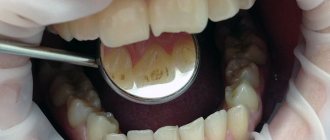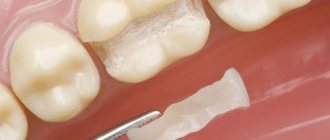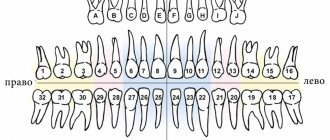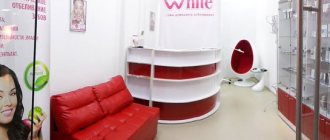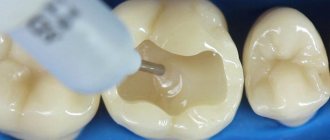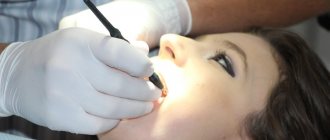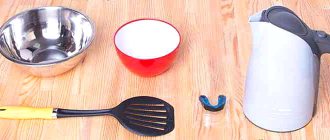New technologies are constantly emerging in dentistry, thanks to which higher-quality dental restorations become possible. These innovative techniques include dental modeling. It allows you to obtain perfectly matching prostheses for a specific patient. With the help of modeling, it became possible to accurately reproduce the anatomical forms and functional features of the dentition. The result is high aesthetics of the entire oral cavity.
There are two types of dental modeling:
- The direct method is diagnostic imitation using wax.
- The indirect method is modeling, so to speak, in full size.
Indirect modeling steps
Indirect modeling takes place in several stages:
- First of all, impressions are taken from the upper and lower jaws. This is done using silicone, and the most important thing is that it is of high quality. At the same stage, the jaws are fixed in the usual closed state with the preparation of the bite ridges and registration taking into account the face bow.
- Working with a specific device that allows you to obtain an accurate model of the movement of the lower jaw and adjust all movements of the masticatory apparatus at the time of its functioning. If the bite is low, the device, taking into account facial characteristics, calculates how much it needs to be raised.
- Installation of the resulting silicone model on a plaster base in an article (special device) for analysis. At this stage, the dental technician takes into account the wishes of the patient and the doctor regarding functionality and aesthetic data. Next, a wax model is made, shown to the patient and, if necessary, adjusted.
If all of the above stages pass without any difficulties, then a permanent prosthesis is made in the laboratory.
Flaws
Wax modeling and restoration of teeth is considered an ideal technique with no disadvantages. However, there is a minus that concerns the material itself. Wax, when compared with others, has a fairly high rate of thermal expansion. This is due to its polymerity. As a result, there are discrepancies in the size of the castings and insufficient fastening of the cast prosthesis. To prevent this from happening, a method is used to fill the dimensions by expanding the molding material and applying a compensation varnish.
Our team of doctors
Maxillofacial surgeon, Implantologist
Bocharov Maxim Viktorovich
Experience: 11 years
Dental surgeon, Implantologist
Chernov Dmitry Anatolievich
Experience: 29 years
Orthopedist, Neuromuscular dentist
Stepanov Andrey Vasilievich
Experience: 22 years
Endodontist, Therapist
Skalet Yana Alexandrovna
Experience: 22 years
Orthopedic dentist
Tsoi Sergey Konstantinovich
Experience: 19 years
Dentist-orthodontist
Enikeeva Anna Stanislavovna
Experience: 3 years
Material requirements
To model teeth, wax of types 1 and 2 is used, the first being appropriate for the direct method, the second for the indirect method. This is due to their quality characteristics. The second type of material is of lower quality, but this property does not affect the result of the model at all. The first type of wax is perfect for making an impression directly in the patient’s mouth.
There are a number of rules regarding the selection, preservation and use of this material. One of them concerns the fact that in order to obtain greater contrast, it is recommended to use waxes of different colors. After cooling, the material should not crumble and must be rigid. The quality of the impression is negatively affected by the presence of crumbs in the wax mass during the heating process. If there are particles or flakes in it, then the surface will not be smooth, but embossed. It should also be borne in mind that when scraping the material should not form chips or fall off in pieces. Exceeding the permissible storage period has a negative effect on the quality of wax.
Accurate and high-quality anatomical modeling of teeth depends on the correct selection of material for a specific method.
Stages of direct modeling
Direct modeling is carried out by the doctor directly in the patient’s oral cavity. In this case, it is possible to accurately determine the appropriate shape of the prosthesis. This procedure can be figuratively compared to trying on a dress:
- The doctor makes impressions of the teeth using silicone, where special attention is paid to the palatal part, without which it is impossible to obtain a full-fledged impression. The silicone impressions are filled with a composite mass, usually a different color from the teeth, and then the copy is placed on the patient’s jaw.
- The resulting impression is taken and excess composites are removed, and adjustments are made if necessary.
- Next, the patient’s teeth are cleaned of plaque using special accessories; they are not sawed or ground down, thereby maintaining their integrity.
- The base shade of enamel is applied to the template itself, then the remaining layers are applied one by one. Thus, the tooth is restored taking into account all the details of its surface. The structure is restored gradually, and finally the corresponding shade of enamel is applied.
When the surface of the model is completely dry, it is processed mechanically. The dentures are treated with a specific glue and attached to the prepared model. The patient is allowed to spend a certain time with temporary prostheses, thereby observing his own sensations and deciding whether further correction is needed. In the meantime, the doctor will be able to study the reactions of the lower jaw joint. The technician is allowed to make several models at the same time, then the patient has a chance to choose the most optimal option.
If the client does not make any complaints, then the resulting models are sent to the laboratory for the production of permanent prostheses. Direct restoration is especially suitable for patients who need to improve their bite and those who have severe enamel wear. Including models, prosthetics on implants is not complete.
Restoration of anterior teeth
Artistic restoration of the front teeth requires even higher demands on the aesthetic side of the issue, because a beautiful smile is one of the most important components of everyday communication between people and an indispensable part of the image of a successful person. The best way to give your front teeth a flawless appearance is to install ceramic veneers.
Dental porcelain, used for artistic restoration of front teeth, is a unique material with many advantages:
- it imitates with perfect accuracy many of the properties of tooth enamel (translucency, degree of light reflection, etc.), and surpasses it in terms of strength;
- Over time, ceramics do not lose their color or become stained;
- Dental porcelain eliminates any allergic reactions of the body.
True, the cost of artistic dental restoration with ceramic veneers is very high and not affordable for everyone.
Restoring anterior teeth with composite materials also has a number of advantages. This is a moderate cost, quick implementation of all dental procedures (usually in one visit), minimal intervention in the structure of dental tissues. However, in terms of aesthetics, strength and resistance to dyes, the composite is very inferior to ceramics.
The question of how much artistic dental restoration costs cannot be answered unambiguously: it depends on the chosen method, the material used, the amount of work and many other factors. Approximate prices at the Doka-Dent clinic are shown in the table on this page.
Advantages of modeling
Artistic modeling of teeth can do a lot - from deepening or protruding a tooth to correcting the shape of the entire dentition. This type of prosthetics has many advantages:
- Demonstration to the patient of a visual, final result.
- Elimination of any defects at the very beginning.
- Absent future discomfort.
- Quickly addictive.
- The adjacent teeth are not damaged.
- All wishes of the patient are taken into account.
- It is possible to adjust the model.
Completely finished models can only improve the final result of the restoration if they are of good quality. Therefore, it makes sense to contact the highly qualified Implantmaster clinic in Moscow, where professionals work exclusively with modern equipment, which guarantees high quality of the final result.
Author:
Peculiarities
In dentistry, modeling teeth using wax is called Wax-up technology. Dentists use two methods of such modeling. One is the formation of a sample of the future tooth on stumps (gypsum bases), and the second is a combination of Wax-up and Mock-up techniques, creating a composite model directly in the mouth based on wax.
This is a mandatory procedure when performing orthopedic correction of defects in the oral cavity. Models need to be made for many purposes. First of all, it is necessary for the doctor to draw up a plan for the upcoming restoration. The wax model serves as a test material, using it the orthopedist and technician establish the method of restoration of the damaged tooth, discuss the scope of further work and possible difficulties in prosthetics.
If you have a model, it will be easier for the patient to explain all the features of the treatment and agree on the final appearance of the teeth. Carrying out this work will allow us to eliminate all inconsistencies and inaccuracies at the initial stage of prosthesis manufacturing.
Wax is the most suitable material, which lends itself well to processing, and after it cools, it quickly and easily takes the desired shape. To perform such work, it has excellent characteristics, namely:
- quite flexible;
- dense;
- lasting.
Thanks to these properties, the technician is able to very accurately recreate the required dimensions of the tooth so that the prosthesis made is as similar as possible to his own. Wax modeling of teeth is necessary to work out the nuances of future work to restore the functionality and aesthetics of the dentition.
Price
Installation of certain types of orthopedic structures in the oral cavity using wax modeling is an expensive dental service. The high cost of the technology is explained by the price of the starting material, the use of special equipment and the high accuracy of the process.
The approximate cost of creating a wax model for 1 unit of dentition varies from 1200 rubles. up to 1500 rub.
The cost of the service may increase if several units need to be restored at once or the defect being corrected is very complex.
The final figure for the use of wax-up modeling is usually announced by the doctor after a visual examination of the oral cavity and examination of x-rays.
The video provides additional information on the topic of the article.
Advantages
Despite the fact that the use of the Wax-up technique for orthopedic correction of defects in the oral cavity requires a specialist to perform additional work that requires the expenditure of material resources and time, doctors advise not to refuse to perform it for a number of reasons:
- The procedure allows you to prevent inaccuracies in calculations during the production of implants, as well as eliminate identified errors at the first stage.
- Manifestations of unpleasant sensations and discomfort upon completion of prosthetics are excluded.
- The duration of adaptation to new artificial units is reduced to a minimum .
- A person can examine in detail the wax model of the future prosthesis , clarify some of the nuances that interest him, thereby eliminating misunderstandings between the patient and the specialist regarding the vision of the result.
- The simulation does not affect healthy neighboring units and does not damage them.
- The preparation of supporting teeth is performed in a gentle way , which also eliminates discomfort and unpleasant sensations.
An important advantage is the type of material used in modeling. Wax is an inert natural material that does not cause adverse reactions in the body.
What are ultraneers and how do they differ from other overlays?
In this publication you will find reviews about componers.
Here https://www.vash-dentist.ru/protezirovanie/nesemnyie-p/viniryi-np/restavratsii-zubov-e-max.html a detailed description of E Max veneers is offered.
Preparatory process
Before doing wax modeling of teeth, you need to complete a number of appointments, one of the first is conducting diagnostics of the oral cavity. If necessary, an x-ray and computed tomography of the jaw should be performed. It is also noted that in case of oral diseases, it is necessary to undergo a course of treatment. Don’t forget to sanitize and follow hygiene rules.
Only after a full examination and treatment course has been carried out, the doctor begins to create impressions.
